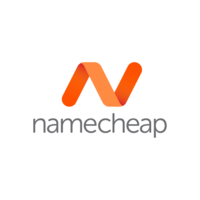What is Amazon Route 53 and what are its top alternatives?
Amazon Route 53 is a scalable Domain Name System (DNS) web service offered by Amazon Web Services (AWS). It allows users to route end users to internet applications by translating domain names into IP addresses. Key features include reliability, low latency, global reach, and integration with other AWS services. However, limitations include complex pricing structure based on usage and the AWS ecosystem lock-in.
- Google Cloud DNS: Google Cloud DNS is a reliable, scalable, and managed DNS service provided by Google Cloud Platform. Key features include low latency, high availability, easy integration with other Google Cloud services, and competitive pricing. Pros include global reach and Google's robust infrastructure, while cons include limited support for non-Google Cloud environments.
- Cloudflare DNS: Cloudflare DNS is a secure and fast global DNS service offered by Cloudflare. Key features include DDoS protection, DNSSEC support, and a user-friendly dashboard. Pros include strong security features and free usage with basic functionality, while cons include occasional outages and limited customization options.
- AWS DNS Management: AWS DNS Management is Amazon Route 53's alternative that offers similar features for managing DNS records within the AWS ecosystem. Key features include seamless integration with other AWS services, reliability, and scalability. Pros and cons are similar to Amazon Route 53 itself.
- Microsoft Azure DNS: Microsoft Azure DNS is a reliable and high-performance DNS service provided by Microsoft Azure. Key features include easy setup, high availability, and integration with other Microsoft Azure services. Pros include strong security measures and competitive pricing, while cons include limited global coverage compared to other providers.
- DNS Made Easy: DNS Made Easy is a premium DNS hosting service known for its speed, reliability, and advanced traffic management features. Key features include global server network, DNS failover, and flexible API for automation. Pros include high performance and advanced traffic routing options, while cons include higher pricing tiers for advanced features.
- BlueCat DNS: BlueCat DNS is an enterprise-grade DNS management solution with features such as DDI (DNS, DHCP, IPAM) integration, automation, and security. Pros of BlueCat DNS include centralized management of network infrastructure and compliance with industry standards, while cons include higher pricing for enterprise-level features.
- PowerDNS: PowerDNS is an open-source DNS server software known for its flexibility, scalability, and performance. Key features include support for various backends, DNSSEC support, and REST API for automation. Pros of PowerDNS include customization options and active community support, while cons include the need for technical expertise to set up and manage.
- Namecheap PremiumDNS: Namecheap PremiumDNS is a cost-effective DNS hosting service with features like DNSSEC, Anycast network, and easy setup. Pros include competitive pricing and user-friendly interface, while cons include limited advanced traffic management options compared to other providers.
- NS1: NS1 is a modern DNS and traffic management platform offering features like intelligent routing, advanced analytics, and API-driven automation. Key features include real-time data processing, DDoS protection, and global server network. Pros of NS1 include advanced traffic routing capabilities and robust security measures, while cons include potentially higher pricing for premium features.
- EasyDNS: EasyDNS is a reliable DNS hosting provider known for its privacy protection, security features, and customer support. Key features include DNS failover, DDoS protection, and domain registration services. Pros include focus on privacy and security, while cons include potential limitations in customization options for advanced users.
Top Alternatives to Amazon Route 53
 GoDaddy
GoDaddyGo Daddy makes registering Domain Names fast, simple, and affordable. It is a trusted domain registrar that empowers people with creative ideas to succeed online. ...
 Google Cloud DNS
Google Cloud DNSUse Google's infrastructure for production quality, high volume DNS serving. Your users will have reliable, low-latency access to Google's infrastructure from anywhere in the world using our network of Anycast name servers. ...
 CloudFlare
CloudFlareCloudflare speeds up and protects millions of websites, APIs, SaaS services, and other properties connected to the Internet. ...
 Google Domains
Google DomainsIt is a domain registration service which includes top website builders. The privacy is included at no additional cost. It also includes simple domain management tools. ...
 Namecheap
NamecheapWe provide a set of DNS servers spread across the US and Europe to deliver highly reliable DNS services to everyone. By choosing Namecheap.com as your domain registrar, you are choosing a highly reputable and reliable partner. Namecheap.com is rated 4.6 out of 5 - Based on 1,395 reviews via Google Checkout ...
 Amazon S3
Amazon S3Amazon Simple Storage Service provides a fully redundant data storage infrastructure for storing and retrieving any amount of data, at any time, from anywhere on the web ...
 Akamai
AkamaiIf you've ever shopped online, downloaded music, watched a web video or connected to work remotely, you've probably used Akamai's cloud platform. Akamai helps businesses connect the hyperconnected, empowering them to transform and reinvent their business online. We remove the complexities of technology, so you can focus on driving your business faster forward. ...
 JavaScript
JavaScriptJavaScript is most known as the scripting language for Web pages, but used in many non-browser environments as well such as node.js or Apache CouchDB. It is a prototype-based, multi-paradigm scripting language that is dynamic,and supports object-oriented, imperative, and functional programming styles. ...
Amazon Route 53 alternatives & related posts
- Flexible payment methods for domains8
- .io support3
- Constantly trying to upsell you2
- Not a great UI1
related GoDaddy posts
I'm planning to make a web app with browser games that would be a Progressive Web App. I decided to use Vue.js as the front framework and Firebase to store basic information about users. Then I found out about Nuxt.js and I figured it could be really handy for making the project as PWA.
The thing is, that I don't know if I will need Server Side Rendering for this, I couldn't find a lot of information but from what I know, the web app doesn't need SSR to be PWA. I am not sure how this would work with JavaScript browser games made with frameworks like Phaser or melon.js. Also, I host my website on GoDaddy and I've heard that it's quite hard to set up SSR with cPanel.
So my questions are:
Should I use SSR for Progressive Web Application built with Nuxt, filled with javascript browser games that are lazily loaded, or does that not make sense? If it makes sense, would SSR work with godaddy hosting and cPanel?
Any help would be appreciated!
I only know Java and so thinking of building a web application in the following order. I need some help on what alternatives I can choose. Open to replace components, services, or infrastructure.
- Frontend: AngularJS, Bootstrap
- Web Framework: Spring Boot
- Database: Amazon DynamoDB
- Authentication: Auth0
- Deployment: Amazon EC2 Container Service
- Local Testing: Docker
- Marketing: Mailchimp (Separately Export from Auth0)
- Website Domain: GoDaddy
- Routing: Amazon Route 53
PS: Open to exploring options of going completely native ( AWS Lambda, AWS Security but have to learn all)
Google Cloud DNS
- Backed by Google9
- High-availability7
- Reliable6
- High volume5
- Anycast DNS servers5
- Low-latency4
- High-Performance4
- Inexpensive4
- Lack of privacy4
- Backed by Google2
related Google Cloud DNS posts
- Easy setup, great cdn424
- Free ssl277
- Easy setup199
- Security190
- Ssl180
- Great cdn98
- Optimizer77
- Simple71
- Great UI44
- Great js cdn28
- Apps12
- HTTP/2 Support12
- DNS Analytics12
- AutoMinify12
- Rocket Loader9
- Ipv69
- Easy9
- IPv6 "One Click"8
- Fantastic CDN service8
- DNSSEC7
- Nice DNS7
- SSHFP7
- Free GeoIP7
- Amazing performance7
- API7
- Cheapest SSL7
- SPDY6
- Free and reliable, Faster then anyone else6
- Ubuntu5
- Asynchronous resource loading5
- Global Load Balancing4
- Performance4
- Easy Use4
- CDN3
- Registrar2
- Support for SSHFP records2
- Web31
- Прохси1
- HTTPS3/Quic1
- No support for SSHFP records2
- Expensive when you exceed their fair usage limits2
related CloudFlare posts
For inboxkitten.com, an opensource disposable email service;
We migrated our serverless workload from Cloud Functions for Firebase to CloudFlare workers, taking advantage of the lower cost and faster-performing edge computing of Cloudflare network. Made possible due to our extremely low CPU and RAM overhead of our serverless functions.
If I were to summarize the limitation of Cloudflare (as oppose to firebase/gcp functions), it would be ...
- <5ms CPU time limit
- Incompatible with express.js
- one script limitation per domain
Limitations our workload is able to conform with (YMMV)
For hosting of static files, we migrated from Firebase to CommonsHost
More details on the trade-off in between both serverless providers is in the article
I use Laravel because it's the most advances PHP framework out there, easy to maintain, easy to upgrade and most of all : easy to get a handle on, and to follow every new technology ! PhpStorm is our main software to code, as of simplicity and full range of tools for a modern application.
Google Analytics Analytics of course for a tailored analytics, Bulma as an innovative CSS framework, coupled with our Sass (Scss) pre-processor.
As of more basic stuff, we use HTML5, JavaScript (but with Vue.js too) and Webpack to handle the generation of all this.
To deploy, we set up Buddy to easily send the updates on our nginx / Ubuntu server, where it will connect to our GitHub Git private repository, pull and do all the operations needed with Deployer .
CloudFlare ensure the rapidity of distribution of our content, and Let's Encrypt the https certificate that is more than necessary when we'll want to sell some products with our Stripe api calls.
Asana is here to let us list all the functionalities, possibilities and ideas we want to implement.
- Minimalist Design2
- Great support1
- It takes long time for DNS propagation1
related Google Domains posts
which is BETTER? I get unlimited sites effectively (minus the fees for domains themselves)... I am a google-phile, but I also want my current site to maintain google email....not pay 7.20/usr/mo extra. DreamHost is relatively expensive after about a year or two. i dont know enough yet about Google Domains and what it comes with. Dreamhost gives you direct SQL access, unlimited emails, WordPress sites, etc.
- Cheap20
- Free privacy protection9
- Awesome customer support6
- Free email forwarding5
- Free custom DNS4
- Web Hosting/CPanel2
- 24/7 Customer Support2
- Premium DNS2
related Namecheap posts
I really love Django because it is really fast to create a web application from scratch and it has a lot a facilities like the ORM or the Admin module ! The Python language is really easy to read and powerful, that's why I prefer Django over Symfony.
I use Django at work to make tools for the technicians but I also use it for me to build my personal website which I host on PythonAnywhere, and with a domain name bought on Namecheap.
Amazon S3
- Reliable590
- Scalable492
- Cheap456
- Simple & easy329
- Many sdks83
- Logical30
- Easy Setup13
- REST API11
- 1000+ POPs11
- Secure6
- Plug and play4
- Easy4
- Web UI for uploading files3
- Faster on response2
- Flexible2
- GDPR ready2
- Easy to use1
- Plug-gable1
- Easy integration with CloudFront1
- Permissions take some time to get right7
- Requires a credit card6
- Takes time/work to organize buckets & folders properly6
- Complex to set up3
related Amazon S3 posts
To provide employees with the critical need of interactive querying, we’ve worked with Presto, an open-source distributed SQL query engine, over the years. Operating Presto at Pinterest’s scale has involved resolving quite a few challenges like, supporting deeply nested and huge thrift schemas, slow/ bad worker detection and remediation, auto-scaling cluster, graceful cluster shutdown and impersonation support for ldap authenticator.
Our infrastructure is built on top of Amazon EC2 and we leverage Amazon S3 for storing our data. This separates compute and storage layers, and allows multiple compute clusters to share the S3 data.
We have hundreds of petabytes of data and tens of thousands of Apache Hive tables. Our Presto clusters are comprised of a fleet of 450 r4.8xl EC2 instances. Presto clusters together have over 100 TBs of memory and 14K vcpu cores. Within Pinterest, we have close to more than 1,000 monthly active users (out of total 1,600+ Pinterest employees) using Presto, who run about 400K queries on these clusters per month.
Each query submitted to Presto cluster is logged to a Kafka topic via Singer. Singer is a logging agent built at Pinterest and we talked about it in a previous post. Each query is logged when it is submitted and when it finishes. When a Presto cluster crashes, we will have query submitted events without corresponding query finished events. These events enable us to capture the effect of cluster crashes over time.
Each Presto cluster at Pinterest has workers on a mix of dedicated AWS EC2 instances and Kubernetes pods. Kubernetes platform provides us with the capability to add and remove workers from a Presto cluster very quickly. The best-case latency on bringing up a new worker on Kubernetes is less than a minute. However, when the Kubernetes cluster itself is out of resources and needs to scale up, it can take up to ten minutes. Some other advantages of deploying on Kubernetes platform is that our Presto deployment becomes agnostic of cloud vendor, instance types, OS, etc.
#BigData #AWS #DataScience #DataEngineering
StackShare Feed is built entirely with React, Glamorous, and Apollo. One of our objectives with the public launch of the Feed was to enable a Server-side rendered (SSR) experience for our organic search traffic. When you visit the StackShare Feed, and you aren't logged in, you are delivered the Trending feed experience. We use an in-house Node.js rendering microservice to generate this HTML. This microservice needs to run and serve requests independent of our Rails web app. Up until recently, we had a mono-repo with our Rails and React code living happily together and all served from the same web process. In order to deploy our SSR app into a Heroku environment, we needed to split out our front-end application into a separate repo in GitHub. The driving factor in this decision was mostly due to limitations imposed by Heroku specifically with how processes can't communicate with each other. A new SSR app was created in Heroku and linked directly to the frontend repo so it stays in-sync with changes.
Related to this, we need a way to "deploy" our frontend changes to various server environments without building & releasing the entire Ruby application. We built a hybrid Amazon S3 Amazon CloudFront solution to host our Webpack bundles. A new CircleCI script builds the bundles and uploads them to S3. The final step in our rollout is to update some keys in Redis so our Rails app knows which bundles to serve. The result of these efforts were significant. Our frontend team now moves independently of our backend team, our build & release process takes only a few minutes, we are now using an edge CDN to serve JS assets, and we have pre-rendered React pages!
#StackDecisionsLaunch #SSR #Microservices #FrontEndRepoSplit
Akamai
related Akamai posts
JavaScript
- Can be used on frontend/backend1.7K
- It's everywhere1.5K
- Lots of great frameworks1.2K
- Fast896
- Light weight745
- Flexible425
- You can't get a device today that doesn't run js392
- Non-blocking i/o286
- Ubiquitousness236
- Expressive191
- Extended functionality to web pages55
- Relatively easy language49
- Executed on the client side46
- Relatively fast to the end user30
- Pure Javascript25
- Functional programming21
- Async15
- Full-stack13
- Setup is easy12
- Its everywhere12
- Future Language of The Web12
- JavaScript is the New PHP11
- Because I love functions11
- Like it or not, JS is part of the web standard10
- Expansive community9
- Everyone use it9
- Can be used in backend, frontend and DB9
- Easy9
- Easy to hire developers8
- No need to use PHP8
- For the good parts8
- Can be used both as frontend and backend as well8
- Powerful8
- Most Popular Language in the World8
- Popularized Class-Less Architecture & Lambdas7
- It's fun7
- Nice7
- Versitile7
- Hard not to use7
- Its fun and fast7
- Agile, packages simple to use7
- Supports lambdas and closures7
- Love-hate relationship7
- Photoshop has 3 JS runtimes built in7
- Evolution of C7
- 1.6K Can be used on frontend/backend6
- Client side JS uses the visitors CPU to save Server Res6
- It let's me use Babel & Typescript6
- Easy to make something6
- Can be used on frontend/backend/Mobile/create PRO Ui6
- Promise relationship5
- Stockholm Syndrome5
- Function expressions are useful for callbacks5
- Scope manipulation5
- Everywhere5
- Client processing5
- Clojurescript5
- What to add5
- Because it is so simple and lightweight4
- Only Programming language on browser4
- Test21
- Easy to learn1
- Easy to understand1
- Not the best1
- Hard to learn1
- Subskill #41
- Test1
- Hard 彤0
- A constant moving target, too much churn22
- Horribly inconsistent20
- Javascript is the New PHP15
- No ability to monitor memory utilitization9
- Shows Zero output in case of ANY error8
- Thinks strange results are better than errors7
- Can be ugly6
- No GitHub3
- Slow2
related JavaScript posts
Oof. I have truly hated JavaScript for a long time. Like, for over twenty years now. Like, since the Clinton administration. It's always been a nightmare to deal with all of the aspects of that silly language.
But wowza, things have changed. Tooling is just way, way better. I'm primarily web-oriented, and using React and Apollo together the past few years really opened my eyes to building rich apps. And I deeply apologize for using the phrase rich apps; I don't think I've ever said such Enterprisey words before.
But yeah, things are different now. I still love Rails, and still use it for a lot of apps I build. But it's that silly rich apps phrase that's the problem. Users have way more comprehensive expectations than they did even five years ago, and the JS community does a good job at building tools and tech that tackle the problems of making heavy, complicated UI and frontend work.
Obviously there's a lot of things happening here, so just saying "JavaScript isn't terrible" might encompass a huge amount of libraries and frameworks. But if you're like me, yeah, give things another shot- I'm somehow not hating on JavaScript anymore and... gulp... I kinda love it.
How Uber developed the open source, end-to-end distributed tracing Jaeger , now a CNCF project:
Distributed tracing is quickly becoming a must-have component in the tools that organizations use to monitor their complex, microservice-based architectures. At Uber, our open source distributed tracing system Jaeger saw large-scale internal adoption throughout 2016, integrated into hundreds of microservices and now recording thousands of traces every second.
Here is the story of how we got here, from investigating off-the-shelf solutions like Zipkin, to why we switched from pull to push architecture, and how distributed tracing will continue to evolve:
https://eng.uber.com/distributed-tracing/
(GitHub Pages : https://www.jaegertracing.io/, GitHub: https://github.com/jaegertracing/jaeger)
Bindings/Operator: Python Java Node.js Go C++ Kubernetes JavaScript OpenShift C# Apache Spark




































